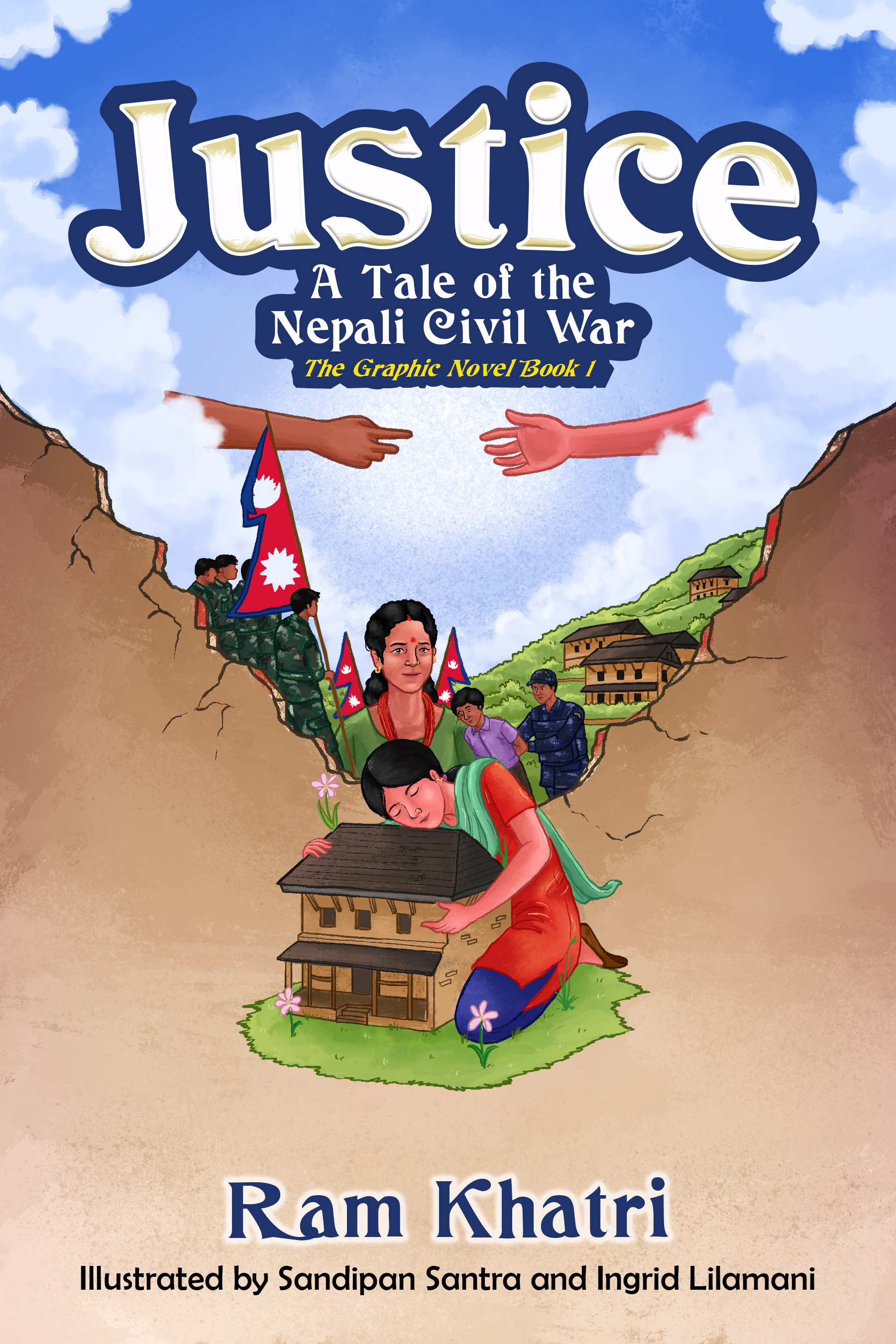Booklife Review

The storytelling in Justice is tense and heartfelt, the shadows gathering over a sunny childhood. Dialogue is spare, just enough to tell the story and reveal the characters, but it’s the art—created, in the book’s first half by Sandipan Santra and in its second by Ingrid Lilamani—that pierces the heart. Santra’s depiction of Tara’s childhood captures an idyll going wrong, with characters’ fears plain on their faces as they hear alarming radio reports or deal with men of uncertain allegiances and motivations. Occasional static panels, repeating what we’ve already seen but with a minor change, are especially powerful: an empty bed, a barn door opening, signs the world is coming to the farm.
Lilamani’s section, meanwhile, offers a bold stylistic choice, presenting Tara’s wrenching further adventures in black-and-white. Santra’s earlier scenes are in color, tinged at times with a haziness appropriate to memories, while Tara’s Nepal looks drained, the faces harsher, land and sky stripped of possibility. (The panels burst with fascinating detail, though.) Here Tara is bereft and growing up, searching for her missing brother. The story ends on a cliffhanger, before readers will be ready to let these characters go, but the journey to it is memorable.
Takeaway: The piercing story of a young woman split from her family during Nepal’s civil war.
Great for fans of: Leila Abdelazaq’s Baddawi, Morten Dürr’s Zenobia.
Production grades
Cover: B+
Design and typography: A
Illustrations: A
Editing: A
Marketing copy: B


